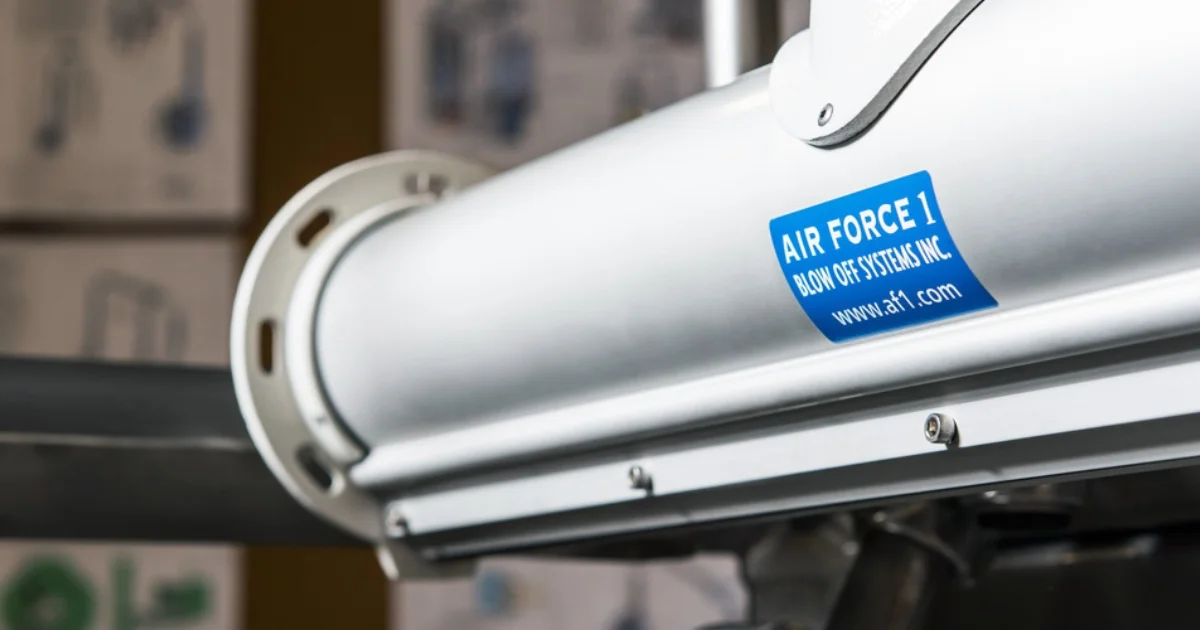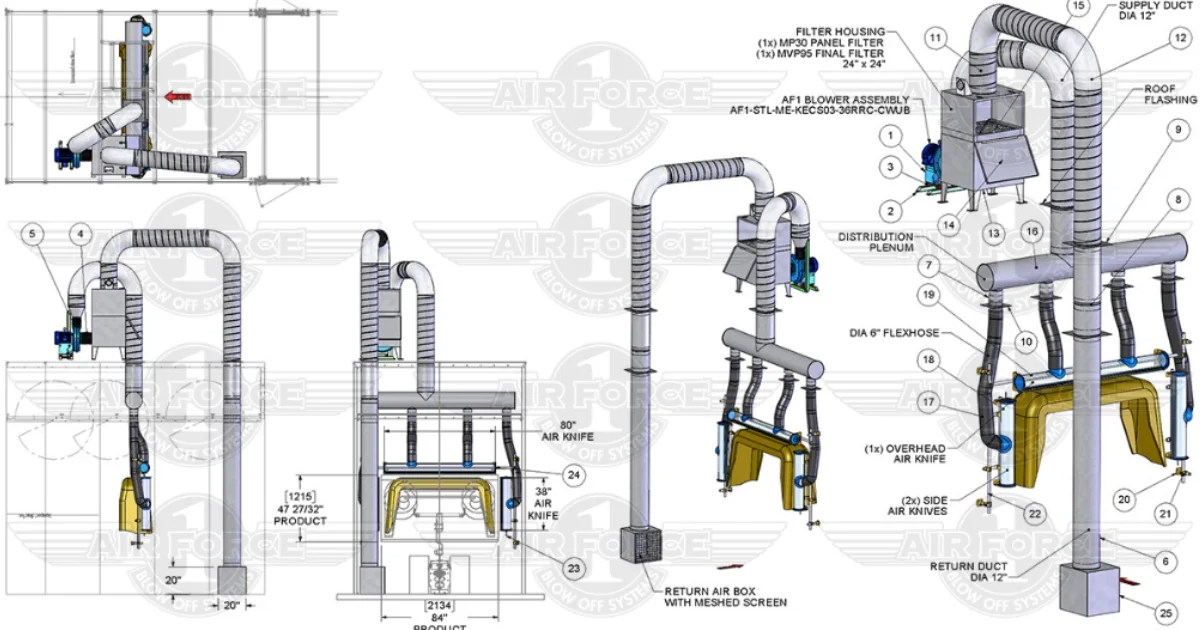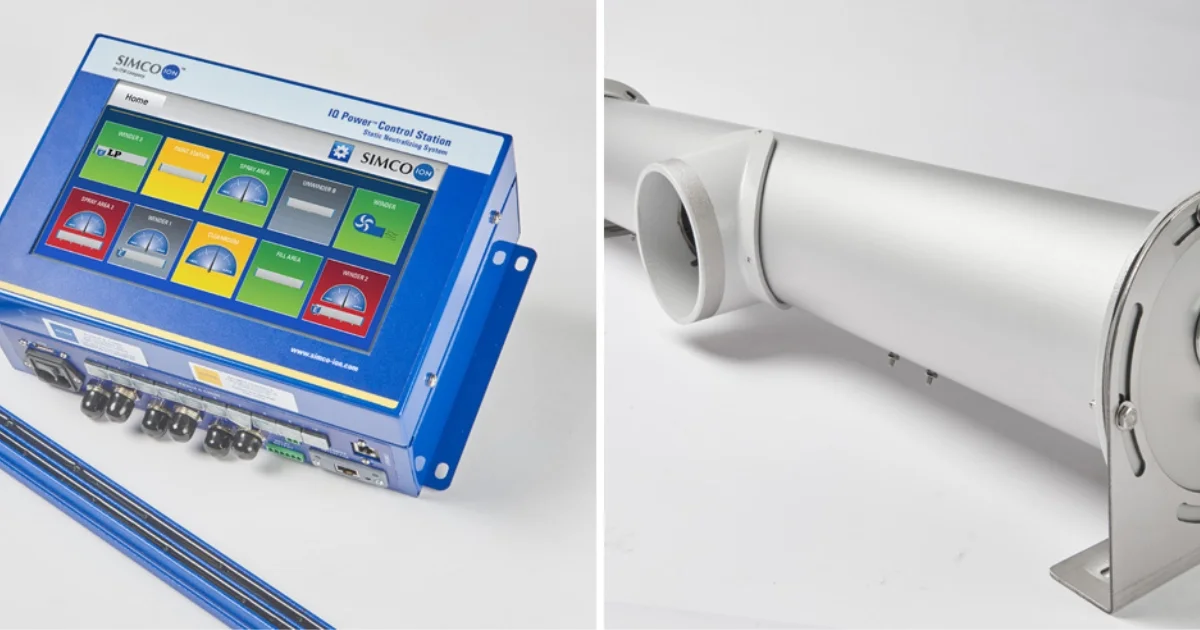
Manufacturers need to keep static electricity in check to achieve the best results for their products. Static electricity can cause many problems during the painting and coating processes, such as imperfections in the finish and issues with adhesion, compromising the quality. Luckily, there’s a solution that addresses these challenges: static control systems.
Static control systems provide effective and efficient solutions to manage static electricity during the manufacturing process. Air Force 1's static control system features specialized static bars built into our air knives, standing out as a piece of industry-leading technology. Today, we’ve revolutionized the way static electricity is managed during these critical processes.
In this blog, we’ll explore how static control systems can improve your painting and coating processes.
Understanding the Role of Static Electricity During the Painting and Coating Process
Before we get deeper into specifics, it’s essential to understand the impact of static electricity on the painting and coating process.
Static charges can attract dust, debris, and other contaminants to surfaces, causing defects in the finish, uneven coating, and product blemishes.
Another issue with static electricity is that it can cause paint and coatings to repel, leading to adhesion problems, wasted materials, and subpar products.
Waste and subpar products = loss of revenue, and no one wants that!
How Static Control Systems Work
Static control systems are sophisticated devices that are designed to combat the issues mentioned above. AF1’s systems incorporate specialized static bars that are seamlessly integrated into air knives.
The integration of static bars into air knives is a key innovation that enhances the overall effectiveness of static control.

Here’s a closer look into how our systems function:
High-Voltage Electrical Discharge
AF1’s static bars are equipped to generate ions through a high-voltage electrical discharge. This involves applying a high voltage to the bars, which then ionizes the surrounding air. The resulting ions are either positively or negatively charged particles which can neutralize static electricity in the surrounding area.
Airflow Integration
AF1’s air knives are designed to produce a precise, controlled stream of air. The airflow generated by these air knives is essential to carrying the ions across the surface that requires treatment. As the air stream flows over the product, it transfers the ions effectively, ensuring that all static charges are subsequently neutralized.
Continuous and Efficient Control
One of the significant advantages of AF1’s patented technology is its ability to provide continuous and highly efficient static control. Integrating static bars in the air knives allows for a steady and consistent application of ionized air, which ensures that all present static charges are neutralized though the painting and coating process. This ensures a uniform and defect-free finish.
Additionally, effective static control minimizes material waste and rework, boosting overall efficiency and reducing production costs. AF1’s static control systems help achieve the maximum quality while streamlining the production process.
How and Why is Static Electricity Created?
Static electricity is generated through various processes involving the transfer of liquids, such as paints and solvents. Key moments when electrostatic charges develop include:
Liquid Flow: As liquids move through pipelines or filters, friction between the liquid and the surfaces can create static charges.
Nozzle Exit: When the liquid exits the nozzle of painting equipment, the high-speed ejection can generate electrostatic charges.
Filling Containers: As liquid falls into containers during the filling process, it can build up static electricity.
Stirring and Mixing: The act of stirring, shaking, or mixing liquid in a container can also lead to the generation of static charges.
The amount of static electricity produced is influenced by several factors:
Container Design and Filling System: The shape of the container and the method used for filling can affect how static charges accumulate.
Paint Resistivity: Products with low resistivity, which are good conductors of energy, tend to accumulate less static charge compared to those with high resistivity.
Transfer Rate: Higher flow rates of the liquid increase the generation of static charges. Similarly, spraying or sprinkling liquids creates more charges than jetted applications due to the additional agitation.
Benefits of Specialized Static Control Systems

The incorporation of specialized static bars into air knives offers several key benefits for the painting and coating process:
Improved Finish Quality
By neutralizing static electricity, these systems help prevent the attraction of contaminants and ensure a cleaner surface. This results in a smoother, more even finish that meets high-quality standards.
Enhanced Adhesion
Proper static control helps improve the adhesion of paints and coatings. When static charges are neutralized, the likelihood of paint repelling or not adhering properly is significantly reduced. This leads to better coverage and durability of the finish.
Reduced Waste and Rework
With fewer defects and better adhesion, there is less need for rework and material waste. This not only saves costs but also improves overall efficiency in the production process.
Consistent Performance
The continuous application of ionized air ensures that static control is maintained throughout the entire process. This consistency helps in achieving uniform results across different batches and production runs.
Versatility
The technology is adaptable to various painting and coating applications, making it suitable for different industries and product types. Whether dealing with large surfaces or intricate parts, the static control system can be tailored to meet specific requirements.
For manufacturers considering the adoption of static control systems, it’s important to evaluate the specific needs of their processes. Factors such as the type of coating, the size and shape of the products, and the existing equipment will influence the choice of static control solutions.
Integrating static bars into air knives involves careful installation and calibration to ensure optimal performance. It may also require adjustments to existing workflows to maximize the benefits of the technology. Consulting with experts and conducting thorough testing can help in achieving the best results.
The integration of specialized static bars into air knives represents a significant advancement in static control technology. The result is improved paint and coating quality, enhanced adhesion, reduced waste, and consistent performance. As industries continue to seek ways to enhance production processes and product quality, static control systems stand out as a valuable tool in achieving these goals.
Contact AF1 today to get a quote on your own static control system.

